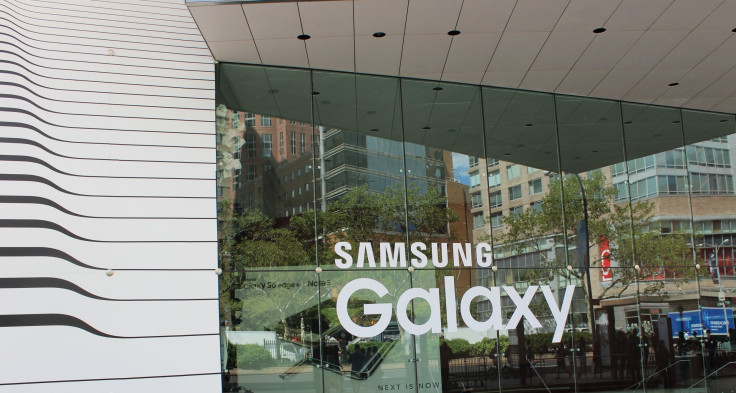With 2015 quickly coming to an end, several smartphone manufacturers will begin releasing their 2016 flagship devices. Samsung in particular is expected to release the Galaxy S7 smartphone in the early months of 2016.
The Samsung Galaxy S7 will follow the Galaxy S6, which has been a pundit and consumer favorite during 2015. The smartphone has helped Samsung recapture some sales that were lost in the last two years. The smartphone introduced a new glass and metal design to Samsung’s high-end lineup as well as hardware aware upgrades as well as some software revamps and increased storage capacities.
However, Samsung’s 2015 revamp was far from perfect. Some criticisms about the Galaxy S6 include the lack of a micro SD slot and the quite pricey, high-tier internal storage options.
In 2016, the manufacturer is expected to further its device overhaul with more software changes. Samsung will likely follow suit in the latest Android trend – stripping away its clunky TouchWiz overlay and making its brand of Android software more like the stock operating system provided by Google.
Samsung is expected to ship a modest 5 million Galaxy S7 handsets during its initial launch, according to Reuters. This is likely to offset, inflated Galaxy S6 sales projections, which Samsung failed to meet. Analysts predicted the Galaxy S6 would exceed 70 million units shipped in 2016; however, the device sold fewer devices during its first month of sales, than the record breaking Galaxy S4 did in 2013.
While no details about the Samsung Galaxy S7 are confirmed, here’s a rundown of rumors that have circulated about the still unofficial device.
Display
Display resolution has become highly commoditized in recent years. Several manufacturers are now outfitting most of their new devices with Full HD (1920 x 1080) resolution displays, likely in an effort to save money. However, consumers can still expect most top-of-the-line smartphones to feature Quad HD (440 x 2560) resolution displays, and the Galaxy S7 is no different.
Where rumors conflict is at display size for the Samsung Galaxy S7. There are several reports that Samsung will release at least two devices as it has for the last year and a half. Unlike the Galaxy S6/S6 Edge, the Galaxy Note 5/Galaxy S6 Edge + and the Galaxy Note 4/Galaxy Note Edge, the two Galaxy S7 devices may have two different display sizes.
Rumors have suggested a 5.1-inch or 5.2-inch display for the Galaxy S7 and a 5.5-inch, 5.7-inch or 5.8-inch display for the second device. Reports have recently begun calling the larger device the Galaxy S7 Plus, but there are rumors that the smartphone could have a display curved at its top and bottom instead of size-to-side.
Reports also indicate that Samsung may also release a Galaxy S7 Edge and Galaxy S7 Edge + later in 2016, which could account for all for all of the different rumors about display sizes.
Design
In 2015, Samsung redid the entire look of its smartphone line. The Samsung Galaxy S6, in particular was a breakout product, featuring a glass and metal design. The Galaxy S6 was the first smartphone on the market to feature Gorilla Glass 4. The Galaxy S6 Edge was the first smartphone on the market to feature a display curved on both its right and left sides.
Samsung came a long way from being bullish about its polycarbonate designs, which it once claimed helped the manufacturer stay on top of frequent release cycles. However, the Galaxy S7 is expected to keep with Samsung’s new design scheme.
Several recent leaks indicate the Galaxy S7 will have a design very similar to the Galaxy S6. Its size and shape are expected to be similar to the Galaxy S6 (while the rumored larger device would likely be similar to the Galaxy S6 Edge +) and its design materials are expected to remain the same.
.@manojmcn Legit or not, it's all but "exclusive"... _ https://t.co/Vl9MJC8iRp #Samsung #GalaxyS7 #CheapExclusivity pic.twitter.com/qqpZ8yyjbg
— OnLeaks (@OnLeaks) December 24, 2015Newly-leaked Samsung Galaxy S7 renders suggest the Plus variant will be 6 inches https://t.co/E8GqtWxffF pic.twitter.com/B19IgR8eoQ
— Phandroid (@Phandroid) December 7, 2015Specifications
Hardware wise, the Samsung Galaxy S7 may contain many older features rather than new, but this doesn’t mean the device won’t be extremely powerful. The manufacturer is expected to reintroduce many hardware features that were popular in prior models, but were removed from the Galaxy S6.
First, the Galaxy S7 may host two different processing chips, depending on the market. Some markets, likely the U.S., the Americas and some parts of Europe may get a Galaxy S7 featuring the Qualcomm Snapdragon 820 chip. Other markets, likely Korea and other Asian countries, the Middle East and Africa may get a Galaxy S7 with an Exynos 8890 chip.
In 2015, Samsung used all in-house, Exynos 7420 chips for all Galaxy S6 models; however, heating issues in the Snapdragon 810 appear to be fixed in the newer Snapdragon 820 and Samsung has reestablished a working relationship with Qualcomm.
Rumors have long suggested that Samsung will retain a 3GB RAM capacity for the Galaxy S7, which was first introduced on the Galaxy S6. But a new report suggests the Galaxy S7 may get a RAM boost to 4GB, which would match the capacity on the Galaxy Note 5.
We’re skeptical of this report, considering that Samsung often uses features like RAM to differentiate between the Galaxy S series and Galaxy Note series, but who knows, maybe a RAM boost for the S7 could mean a further RAM boost for the next Galaxy Note later in 2016.
Samsung may also reintroduce a 16GB internal storage model of the Galaxy S7, in conjunction with a micro SD slot to allow expandable storage. The device may also come in 32GB and 64GB models. The Samsung Galaxy S6 came in 32GB, 64GB and 128GB models; however, critics balked at its lack of expandable storage. Consumers bought so few 128GB models that Samsung scrapped the storage capacity for the Galaxy Note 5 in most markets.
Samsung has introduced new low-end and mid-range smartphones, which feature glass-and-metal unibody designs and micro SD expansion up to 128GB. It is likely the Galaxy S7 could feature micro SD expansion up to 2TB, similar to device like the LG G4 and HTC One A9.
Samsung may also return to the Galaxy S7, a high-capacity battery, for which many Android smartphones are known. The Samsung Galaxy S6 and Galaxy S6 Edge feature 2,550-mAh and 2,600-mAh batteries respectively, which are quite diminutive, considering the Galaxy S5 featured a 2,800-mAh cell. Rumors suggest a 3,500-mAh battery for the Galaxy S7, which would be 5,00-mAh more powerful that the Galaxy Note 5.
The Galaxy A9, Galaxy A7 and Galaxy A5 all launched in December as mid-range devices including respective 4,000-mAh, 3,300-mAh and 2,900-mAh batteries, leaving a 3,500-mAh battery fully in the realm of possibility for the high-end Galaxy S7.
Software
The Samsung Galaxy S7 is a shoe-in to run the latest Android 6.0 Marshmallow operating system. If consumers are lucky, the smartphone will at least run Android 6.0.1, which features an updated emoji set.
We’ve seen Android rivals like HTC strip down its custom overlays to give devices a cleaner user experience, more like stock Android. Samsung is expected to do the same with the Galaxy S7. Though Samsung attempted to clean up its TouchWiz overlay on the Galaxy S6, doing away with many gimmicky special features and allowing users to disable certain applications, the interface screams Samsung over-customization, rather than Android smartphone.
A cleaner operating system may also mean faster Android updates, which would surely be well received by consumers.
Camera
After several camera rumors, pundits have settled on a 20-megapixel lens for the Galaxy S7. The camera may also feature RAW image support, which is equivalent to treating photos in a dark room.
Similar to older devices, Samsung will likely use a Sony camera module. The Galaxy S7 may feature a variation of the Sony Xperia Z5 camera, which includes 4K video recording and dual-LED flash. The Samsung Galaxy S7 may feature a 8-megapixel front-facing camera, similar to the Galaxy S6.
Prior reports suggested a 25-megapixel camera or 12-megapixel lens with a 1/2-inch sensor; however, these rumors have since fizzled.
New Features
The Samsung Galaxy S7 is expected to be chalk full of new features. Foremost would be a 3D touch display, similar to the ForceTouch feature on the iPhone 6s and 6s Plus. ForceTouch is a haptic feedback feature, which allows users to perform tasks by putting different pressure on the screen. Samsung is expected to brand its version of the technology as ClearForce.
The Galaxy S7 may also feature USB Type-C, much like many other rival devices, including the Nexus 6P and Nexus 5X, the OnePlus 2 and Huawei Mate S. The connector port promises data transfer speeds, faster than USB 3.0 and universal compatibility, meaning users can insert a plug into compatible USB Type-C port either upside down or right side up. However, we are skeptical of this rumor, considering how Samsung has doubled down on its quick charging and wireless charging technology with USB 2.0 in the last year.
Rumors have suggested that the Galaxy S7 may feature a retina scanner technology; however, this feature may not be available on the Galaxy S7 at launch. It may be included on Galaxy S7 variants that release later in 2016.
The Galaxy S7 is sure to feature a fingerprint scanner. Samsung will likely work on improving fingerprint detection sensitivity and unlocking speeds for the Galaxy S7.
The Samsung Galaxy S7 may also feature the latest Gorilla Glass 5 by Corning, after the Galaxy S6 introduced Gorilla Glass 4 to the market in March. Gorilla Glass 4 is marketed as twice as tough as Gorilla Glass 3, so surely Gorilla Glass 5 would be considerably stronger than Gorilla Glass 4. However, this rumor is fairly new.
Reports have also indicated that Samsung is working on its own glass panels, branded as “Turtle Glass,” surely after the indestructible nature of a turtle’s shell. Turtle Glass may have something to do with Samsung’s work with flexible and foldable displays.
Price
Reports suggest the Samsung Galaxy S7 could feature a hefty price tag of at least $700. This wouldn’t be surprising, considering all of the features the device may include. However, we note the Galaxy S6 at its cheapest, sold for $599.99 unlocked, which is pretty standard for a high-end device, even with a 32GB base model.
However, if Samsung does reintroduce its 16GB model, consumers may end up paying more for 32GB and 64GB Galaxy S7 models than they did 32GB and 64GB Galaxy S6 models. Then they get to pay extra for a micro SD card, so, yay?
Release Date
The Samsung Galaxy S7 may be announced on Feb. 21 at World Mobile Congress. Recent reports suggest the smartphone may hit markets, China in particular, in mid-March.
Typically, Galaxy S devices are announced in March and released in April. However, WMC falls in February in 2016. We’ve also seen Samsung deviate from its usual launch schedule with the Galaxy Note 5, which was announced and released in August, instead of its customary September/October time frame.
The Galaxy S7 is expected to similarly follow an early launch to beat many competitors to market.

















